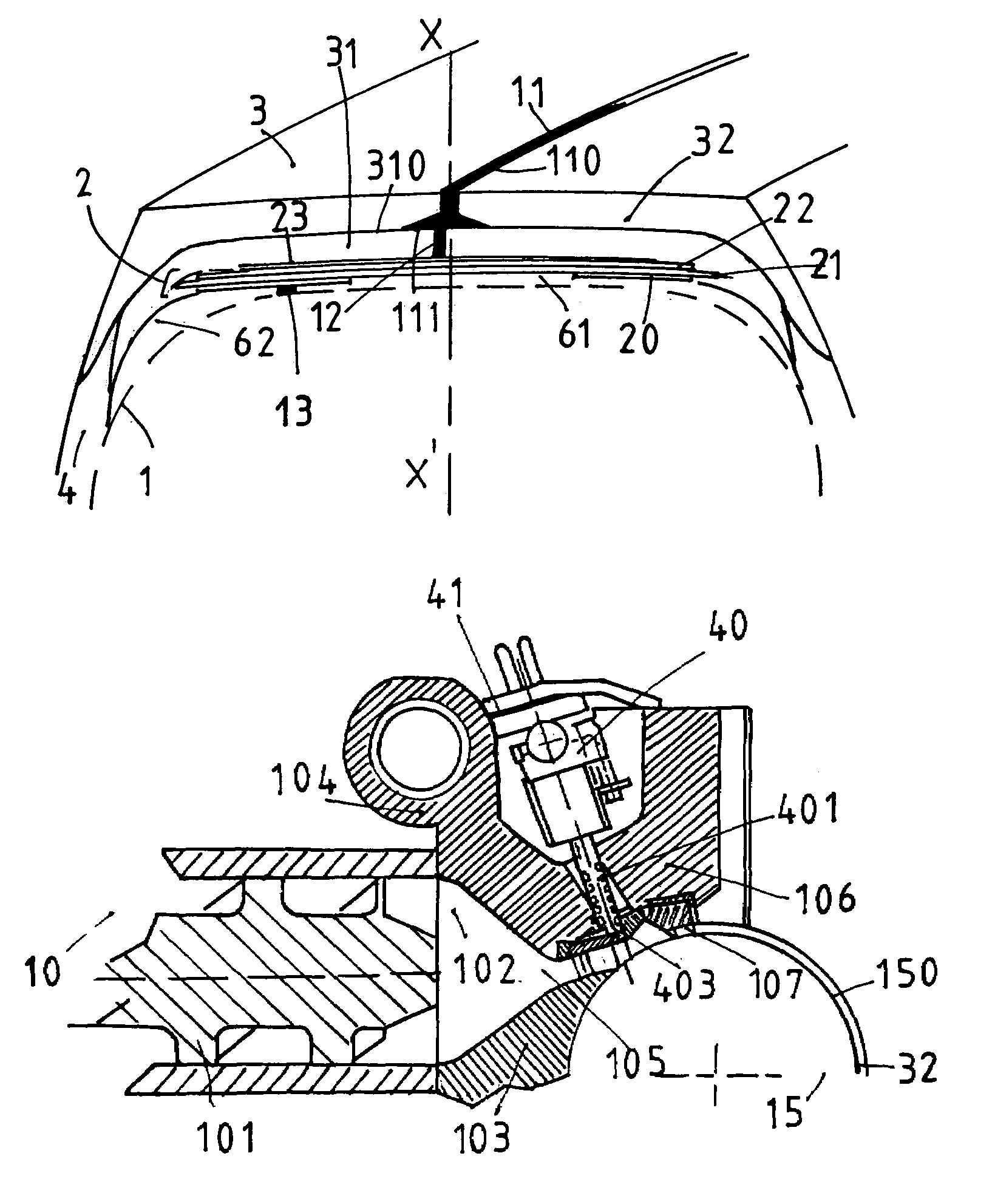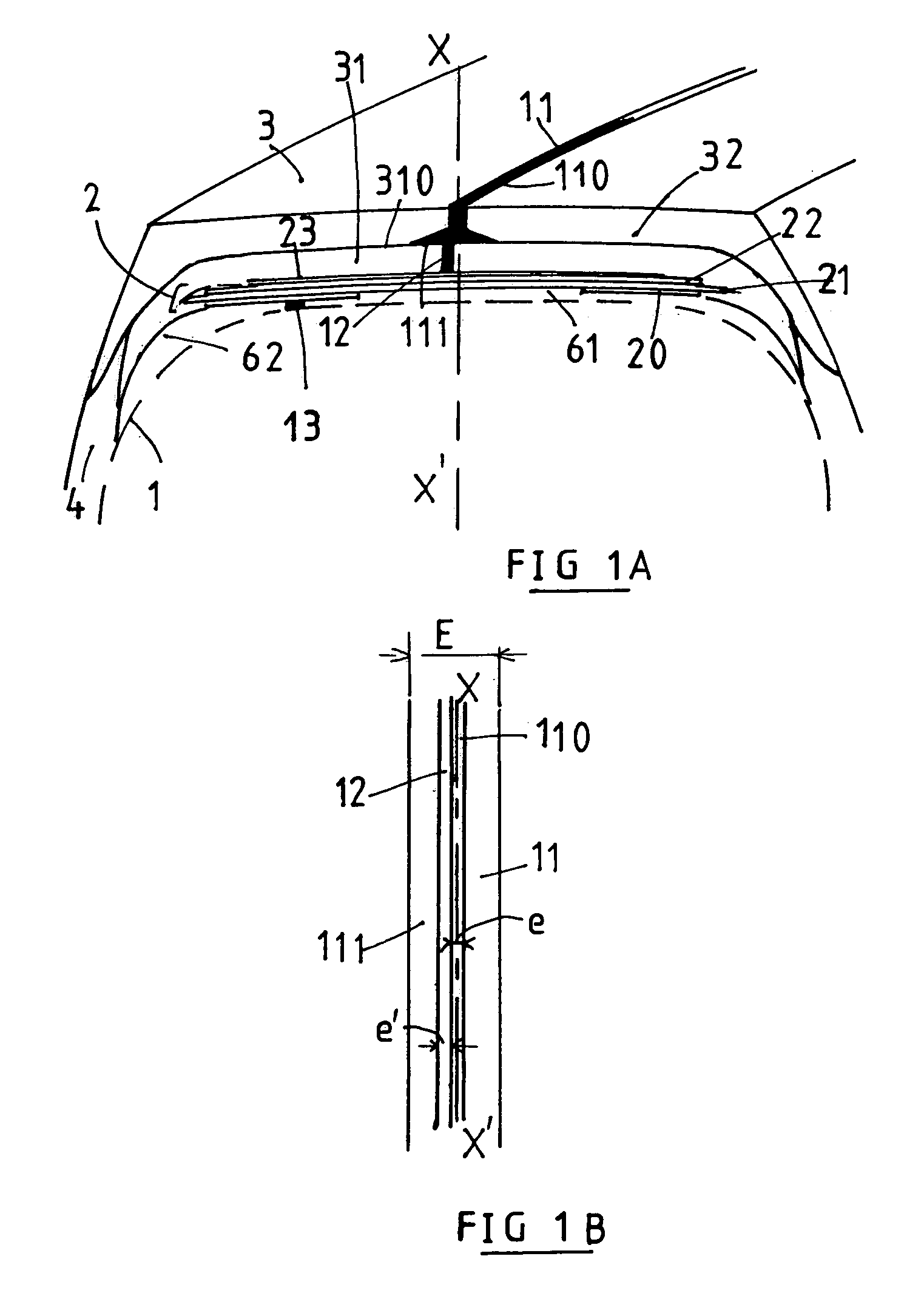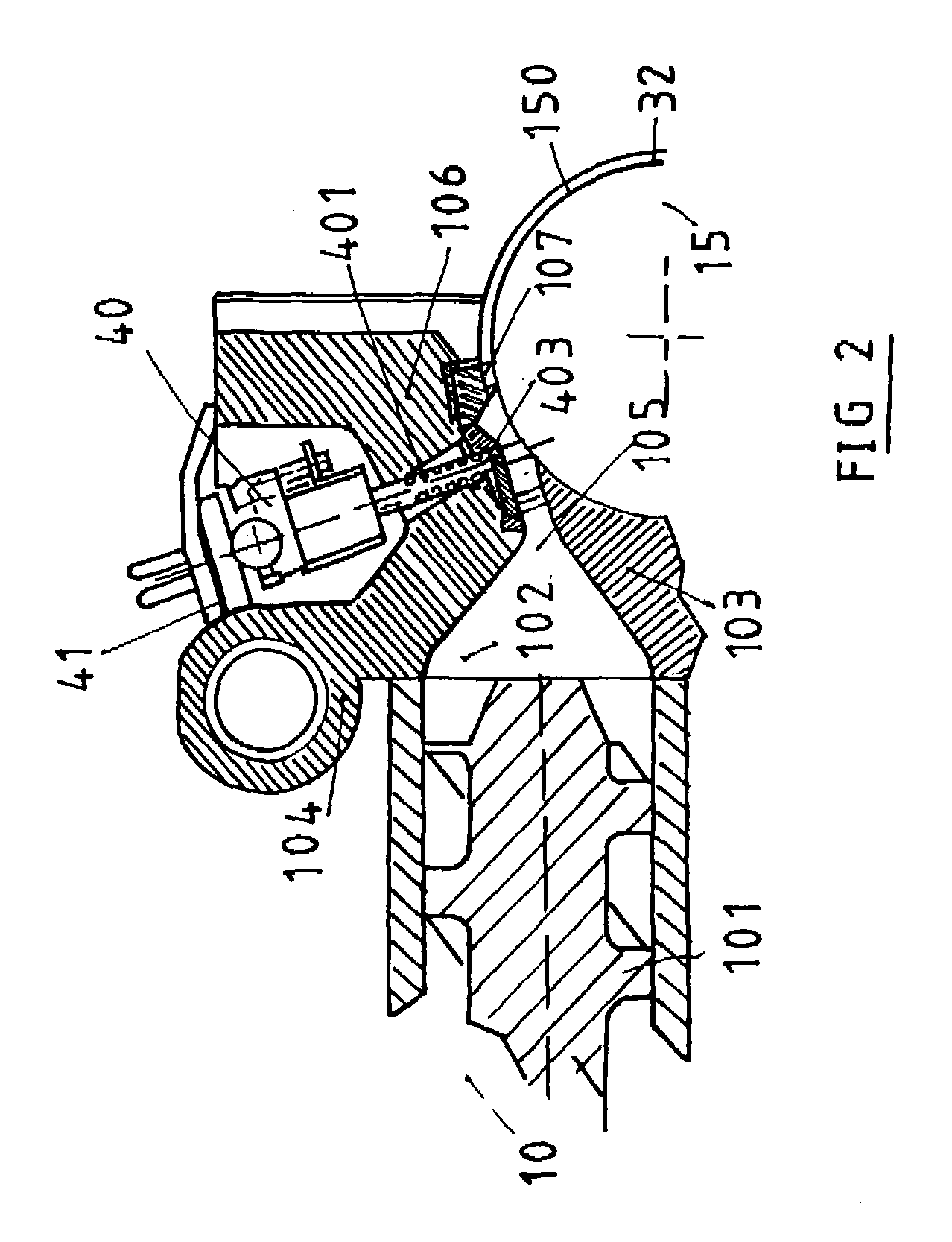Electrically conductive tire and apparatus and process for extruding elements which have been made conductive
a technology of electric conductive tires and extruders, which is applied in the direction of tyre parts, textiles and papermaking, and tyres using treads, which can solve the problems of accumulating static electricity to a greater or lesser extent, giving the occupant of the vehicle an unpleasant electric shock, and achieving the effect of dissipating electrostatic charges and reducing costs
- Summary
- Abstract
- Description
- Claims
- Application Information
AI Technical Summary
Benefits of technology
Problems solved by technology
Method used
Image
Examples
Embodiment Construction
[0035]The tire of dimension 315 / 80 R 22.5, which is designed to have a low rolling resistance, comprises a carcass reinforcement 1 composed of a metal ply formed of inextensible metal cables coated in a rubber calendering mix, which is rendered conductive of electrostatic charges by means of a carbon black commonly used as a reinforcing filler in mixes. Said carcass reinforcement 1 is, as is known, anchored to at least one bead wire within each bead to form an upturn (not shown). Within said carcass reinforcement 1 there are the conventional reinforcement layers, and the so-called inner layers formed of mixes which are generally impermeable to the known inflation gases. The end(s) of this (these) inner layer(s) is (are) generally covered by the axially inner part of the protective layer of the bead (not shown), a wear layer, the axially outer part of which bears on the mounting rim, said layer generally having a very high content of carbon black filler, and therefore being highly co...
PUM
| Property | Measurement | Unit |
|---|---|---|
| Pressure | aaaaa | aaaaa |
| Electrical conductivity | aaaaa | aaaaa |
| Electrical conductor | aaaaa | aaaaa |
Abstract
Description
Claims
Application Information
 Login to View More
Login to View More - R&D
- Intellectual Property
- Life Sciences
- Materials
- Tech Scout
- Unparalleled Data Quality
- Higher Quality Content
- 60% Fewer Hallucinations
Browse by: Latest US Patents, China's latest patents, Technical Efficacy Thesaurus, Application Domain, Technology Topic, Popular Technical Reports.
© 2025 PatSnap. All rights reserved.Legal|Privacy policy|Modern Slavery Act Transparency Statement|Sitemap|About US| Contact US: help@patsnap.com



